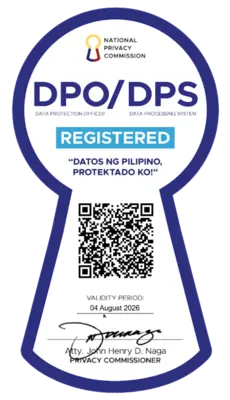Cavitex is first PHL tollway to implement RFID sticker system
Drivers passing through Cavite Expressway (Cavitex) can now opt to pay toll fee without having to roll down their windows to pay cash or swipe a card.
This is possible via radio frequency identification (RFID) stickers called EasyDrive, a "paper-thin sticker that contains a chip and an antenna" attached to a vehicle's windshield.
It utilizes radio frequency identification (RFID) technology, which is being applied on a Philippines tollway for the first time.
It is a battery-less transponder. "One advantage of a (battery-less transponder) is that you don't need to replace it. if you don't tamper with the product, it can last more than 10 years," Bobby Bontia, senior vice president for toll operations at Tollways Management Corporation said.
Two dedicated lanes on Cavitex (Paranaque and Kawit, Cavite) will be installed with antennas that can detect or read the sticker and automatically raise the toll barrier.
Instead of making a full stop, cars will only need to slow down until the RFID reader detects the sticker and raises the bar.
This allows the technology to let 1,200 cars through per hour, which is more than the 800-cars-per-hour lane throughput of the E-Tap Card lane where drivers have to roll down their windows and swipe the card through a sensor.
"With RFID, congestion in the toll plaza will be greatly reduced," said Luigi Bautista, president and CEO of the Cavitex Infrastructure Corporation, at the launch on Tuesday.
Bautista said installation begins with checking the windshield for metal content and having the customer fill out a simple registration form.
Activation and installation of the RFID sticker comes next, followed by a test scan.
"The entire process will be completed in no more than 15 minutes," Bautista said.
The EasyDrive will cost P400: P200 for the sticker and the swipe card, and an initial minimum load of P200. At the moment, RFID stickers are only made available to Class 1 vehicles like cars, jeepneys, pickups and vans.
Point of Sale stations will be put up at the Paranaque Toll Plaza at the southbound and northbound lanes. By mid-July, additional reloading facilities will be put in place.
Swipe Cards as backup
An EasyDrive sticker comes with a reloadable Swipe Card which can be used to check one's balance and to swipe in case of emergencies.
"There's no guarantee that the antenna on top (of the toll gate) will be functioning 100 percent of the time. There may be instances when the cable may be broken, the connection is interrupted. In such instance, the motorist can surrender the swipe card to a toll teller and the toll tellers can swipe the card," said Lee Tiam, Managing Director of RTS Technology Malaysia.
"The sticker comes with a swipe card. In an event of an emergency na nagfail yung system for some reason, you can surrender your card in a manual lane. But yun lang for emergencies," added Bontia.
However, not all vehicles can be fitted with EasyDrive. Before installation, the metal content of a car's windshield will first be measured. Cars with higher metal content cannot be installed with a sticker since they may not be detected by the RFID reader.
"Initial results of our (tests) showed that pagka yung tint ng kotse ay yung magic na darker sa umaga but lighter sa gabi na type of tint, yun ang mga hindi pumapasa. But in fact, yung mga dark na tint, pumapasa," Bontia said.
"We're working on a headlamp-type sticker that can be placed outside (the windshield)," he added.
"We are also currently working on implementing EasyDrive in the NLEX (North Luzon Express Way)," said Ramoncito Fernandez, Metro Pacific Tollways Corporation president.
RFID technology is already being used on tollways in USA, Canada, India, Taiwan, and parts of Europe. — JDS/TJD, GMA News




